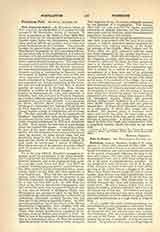

Fort Augustus Abbey. — St. Benedict’s Abbey, at Fort Augustus, Invernessshire, is at present the only monastery for Benedictine monks in Scotland. It owed its inception to the desire of John, third Marquess of Bute, for the restoration of monasticism in a country which, before the Reformation, possessed so many glorious abbeys and priories, and in later days owned many others on the Continent. The marquess brought the matter before the superiors of the Anglo-Benedictine Congregation in 1874, promising substantial pecuniary help in the establishment of a house in Scotland, with the understanding that when two other monasteries should have been founded they should all form a separate Scottish congregation. The suggestion was approved of, and the Anglo-Benedictine authorities resolved to incorporate with the Scottish monastery the more ancient foundation of Sts. Adrian and Denis, formerly existing at Lambspring, in Hanover, which was peopled by English monks from 1645 to 1803, and when suppressed by a hostile government was afterwards resuscitated in England; inadequacy of funds had prevented any lasting restoration of this house, but with the help promised by Lord Bute, it seemed possible to revive it in Scotland. Dom Jerome Vaughan, a brother of Cardinal Vaughan, was appointed to superintend the work, and succeeded in collecting from rich and poor in England, Scotland, and Ireland, sufficient means for the erection of a fine monastery at a cost of some £70,000. A site was given by Simon, fifteenth Baron Lovat, comprising the buildings of a dismantled fort, built in 1729 and known as Fort Augustus, a title given in compliment to George Augustus, Duke of Cumberland, son of George II. The fort, originally erected for the suppression of Highland Jacobites, had been purchased from the Government by the Lovat family, in 1867. The monastic buildings commenced in 1876 were completed in 1880. They occupy the four sides of a quadrangle about one hundred feet square. In one wing a school for boys of the upper classes was conducted by the monks, with the assistance of university graduates and other lay masters, for about sixteen years, but was reluctantly closed in 1894, as its distance from England and the dearth of Scottish Catholic families of rank made its continuance a matter of difficulty. This school was one of the pioneers of a more refined style of equipment than was usual at the time of its inception.
Up to the year 1882 St. Benedict’s monastery remained under the jurisdiction of the Anglo-Benedictine Congregation, but in response to the wishes of the Scottish hierarchy, and of the leading Scottish nobility—notably Lords Lovat and Bute—Leo XIII, by his Brief “Summa cum animi laetitia,”, dated December 12, 1882, erected it into an independent abbey, immediately subject to the Holy See, thus separating it from English rule. When this step had been accomplished, Lord Lovat made over the property to the Scottish community, by signing the title deeds, which for a time had been held over. In 1888 Dom Leo Linse of the Beuron Benedictine Congregation, who had resided for more than ten years in England, part of that time as superior of Erdington Priory, near Birmingham, was nominated abbot by the Holy See and received the abbatial benediction at the hands of Archbishop, afterwards Cardinal, Persico, who had been sent to the abbey as Apostolic Visitor. In 1889, special constitutions, based upon those of the Beuron Benedictine Congregation, were adopted, with the approval of the Holy See, for a term of ten years. These, after certain modifications suggested by experience, received definite approbation in 1901. In 1905, in view of the exceptional position of the monastery as an independent abbey, the Holy See conferred upon the primate of the Benedictine Order as regards Fort Augustus Abbey, the powers ordinarily exercised by the president of a congregation. This arrangement has not only provided for regular canonical visitations at definite intervals, but has facilitated intercourse with the Holy See, under whose immediate jurisdiction the abbey still remains.
From its foundation the monastery made it a prominent duty, in accordance with the tenor of its constitutions, to fulfil St. Benedict’s precept regarding the celebration with befitting solemnity of the liturgical worship of the Church. Mass, Vespers, and the Divine Office are daily celebrated with the music and ritual demanded by the varying importance of season or festival. Since 1893 the Solesmes version of the Gregorian melodies, since recognized as the authoritative edition of the chant, has been exclusively used in all liturgical services. The time that is not occupied by choir duties and other community exercises is claimed by a variety of occupations. The management of a large farm and of an adjoining estate, annually let to tenants for shooting purposes; the generation of electric light for the use of the abbey and of many of the residents of the village; the working of a small printing press; the spiritual charge of a tract of country forty square miles in extent, containing many habitations of Catholics scattered over the hills; the preaching of missions, and the giving of retreats both within and without the abbey; the rendering of assistance to the diocesan clergy when required; Biblical, theological, musical, artistic, and scientific studies; literary work, facilitated by a fine library of some 20,000 volumes and some rare and precious manuscripts; all these afford abundant employment to a community of about fifty monks and lay brothers. The graceful group of buildings whose spires and turrets rise above the trees forms a conspicuous object from Loch Ness, and is visible from a distance of many miles. A church of large size, designed by Peter Paul Pugin, was commenced in 1890; a temporary wooden church has been in use since 1880.
MICHAEL BARRETT

